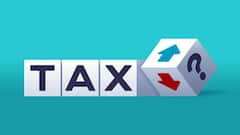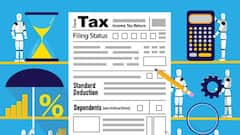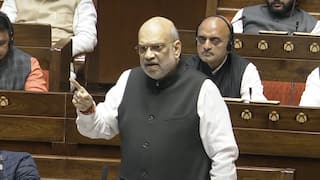Understanding Cashback: How To Choose The Best Credit Card For Your Financial Goals
Credit cards are considered ideal financial tools since they let customers save money, receive incentives, build creditworthiness, and much more

By Prashant Kumar
Being the fastest-growing economy in the world, India consistently strives to foster an enhanced financial services ecosystem for people in the country. Today, banks and financial institutions are working diligently to improve their offerings by introducing innovative payment products and mechanisms that simplify access to formal credit.
While traditionally, formal credit was limited to products like home, car, and personal loans, recent shifts in customer preferences have seen these institutions introducing robust instruments like credit cards to support their diverse needs.
According to the RBI, credit card transactions were valued at Rs 18.31 lakh crores in March 2024. The increase in numbers highlights that with rising economic activity and lifestyle changes, more and more Indians are utilising credit cards to shop, travel, and pay bills. Credit cards are considered ideal financial tools since they let customers save money, receive incentives, build creditworthiness, and much more. While there are many kinds of cards, including co-branded, incentive, secured credit cards - cashback has emerged as the most popular selling point and differentiator.
Significance of Cashback Credit Card
Typically, a cashback credit card allows people to earn a set amount based on their spending. It might take the form of reward points or cash that is credited to their bank account. The majority of credit cards give cash back on purchases related to lifestyle, electronics, bill payments, groceries, online meal delivery, entertainment, and so on.
Depending on the bank, a customer might receive a variety of credit card offers. Some credit cards provide a flat per cent cashback, while others provide a larger cashback rate based on the transaction. It all depends on the requirements and the type of cashback offer the customer likes. In simple words, cashbacks are a means to recoup a portion of their previous purchases. If customers wish to get reward points rather than money, they may select a card that meets their needs. For instance, a bank credit card offers 5 per cent cashback on online spending without any merchant restriction and 1 per cent additional cashback on offline expenses.
How to opt for the best Cashback Credit cards?
There are two types of cashback credit cards, namely, fixed bonus categories, flat rate, cardholder’s choice categories and rotating bonus categories. There is no one-size-fits-all for the cashback amount since the credit card that may provide the most cashback will be determined by a customer’s daily purchasing patterns. While flat-rate cards are a fantastic option for people who want a hands-off approach to earning cash back, a card that offers a greater cashback rate in specific fixed or rotating bonus areas may be able to increase the total return.
Flat-rate cashback credit cards: These are the easiest to recognise and utilise. If any customer wishes to plan a trip or purchase groceries, they will receive the same amount of cash back every time they swipe. Moreover, these cashback cards are great for folks who are new to credit card rewards or don't enjoy keeping track of categories.
Rotating bonus categories: These cards provide greater cashback rates to customers (usually 5 per cent) on purchase categories that change every month or quarter. Home improvement businesses, streaming services, drugstores, select merchants and wholesale clubs are some of the most popular bonus categories. Many cards require customers to activate bonus categories in order to receive a greater cashback rate. In such cases, they can set up calendar reminders to avoid missing out.
Fixed bonus categories: These cards often known as a tiered rate card, provide a higher cashback rate in selected categories (between 2 per cent and 6 per cent) and at least 1 per cent cash back on all other transactions. The fixed bonus categories include eating, grocery and petrol station purchases. However, these cards are often restricted to a specific level of expenditure. These expenditure limits are often imposed regularly or yearly. Once a customer reaches the maximum spending limit, the base cashback rate applies to any additional purchases in that category. These cards are, therefore, ideal for persons who are very conscious of their expenses and spend the most in the higher bonus categories.
Cardholder choice cards: These sorts of cashback credit cards operate similarly to rotating category cards, allowing consumers to select the category in which they can earn a bonus each month. They may need to set a reminder to select their extra category, but it might be worth it. They will be able to analyse their expenses and plan for the upcoming month. For people, who want a bit more control over how they earn cash back, this card can be the best option.
In conclusion, customers can choose cards on the basis of their purchasing patterns while effectively multiplying their cashback rewards and saving significantly on their expenses. Additionally, they may examine the card's terms and conditions on a regular basis to be informed about new offers and possibilities.
The author is the founder and CEO of Kredit.Pe, a Bengaluru-based fintech start-up.
[Disclaimer: The opinions, beliefs, and views expressed by the various authors and forum participants on this website are personal and do not reflect the opinions, beliefs, and views of ABP News Network Pvt Ltd.]
Trending News
Top Headlines






































